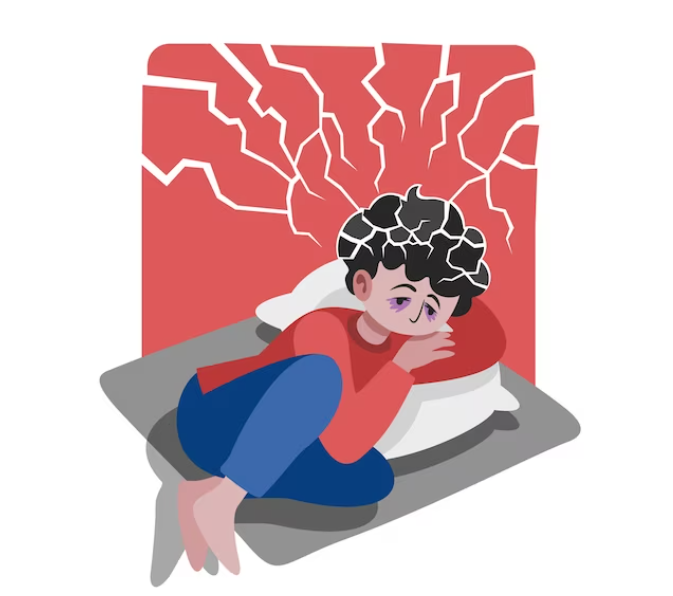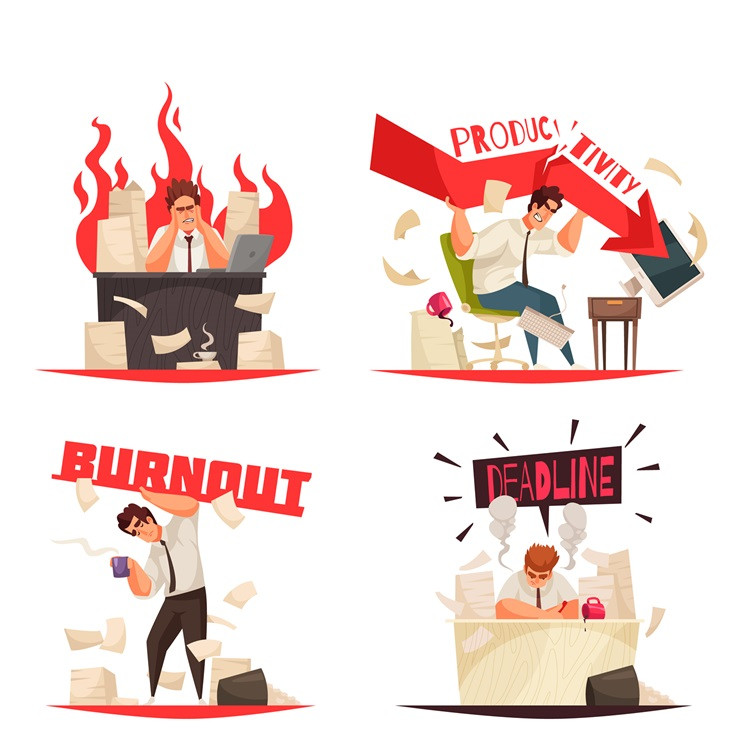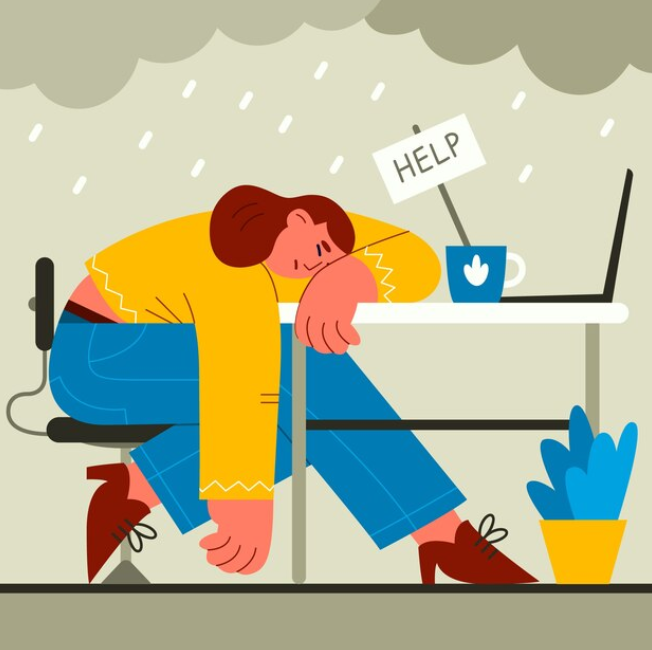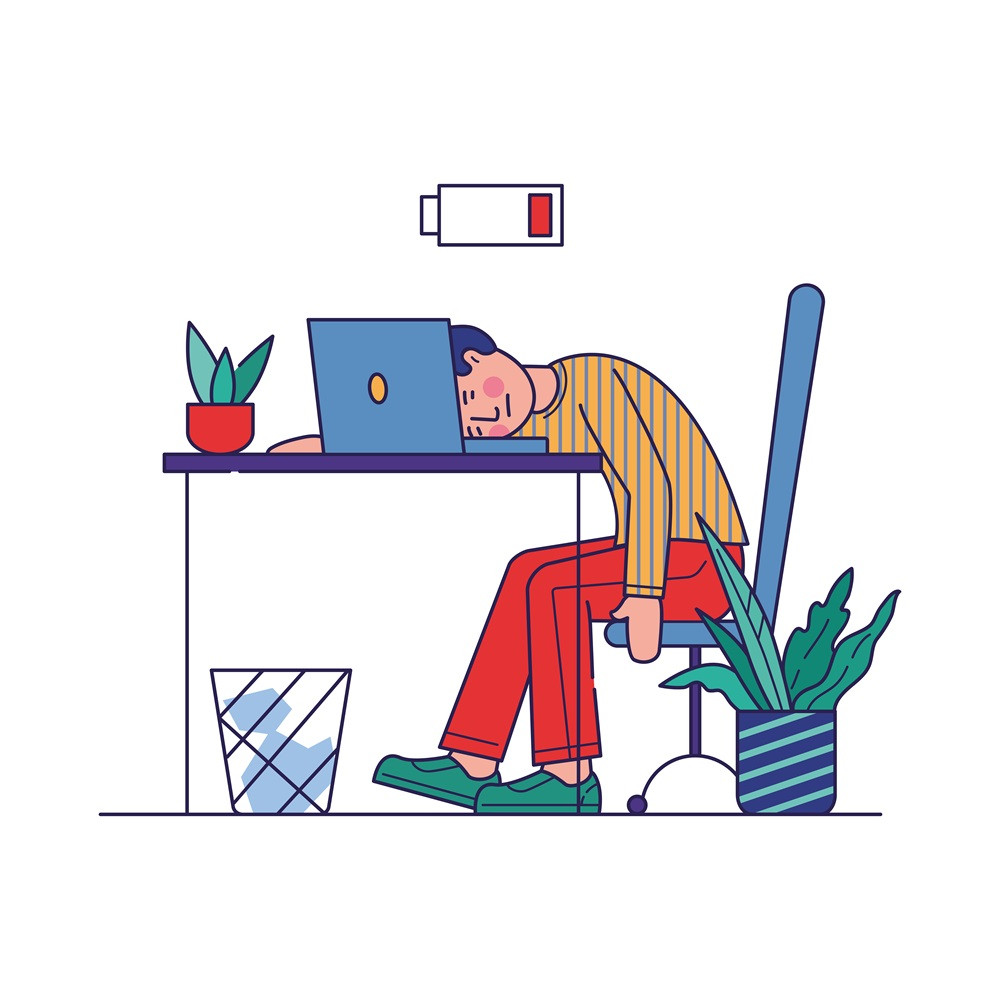In today’s fast-paced world, burnout has become a prevalent issue affecting individuals across various walks of life. Whether it’s due to the demands of a high-pressure job, personal challenges, or a combination of factors, burnout can seriously impact mental health and overall well-being. In this article, we will delve into the intricate aspects of burnout, exploring its signs, symptoms, and strategies for recovery. By understanding the nuances of burnout and implementing proactive measures, individuals can effectively manage stress and cultivate a healthier, more balanced lifestyle.
What is Burnout?
Burnout is a state of emotional, physical, and mental exhaustion caused by prolonged stress or overwhelming responsibilities. It transcends mere tiredness or overwork; rather, it’s a pervasive sense of depletion that can permeate various aspects of life. Burnout often stems from chronic workplace stress, but it can also result from prolonged exposure to challenging life circumstances or inadequate self-care practices.

Signs and Symptoms of Burnout
Recognizing the signs and symptoms of burnout is crucial for early intervention and effective management. While the manifestations of burnout can vary from person to person, some common indicators include:
Persistent Fatigue: Individuals experiencing burnout often report feeling chronically fatigued and lacking energy, even after adequate rest.
Decreased Motivation: Tasks that were once enjoyable may now feel burdensome, leading to a notable decline in motivation and enthusiasm.
Cynicism and Detachment: Feelings of cynicism or detachment from work, colleagues, or personal relationships may surface as burnout progresses.
Reduced Efficiency: Despite efforts to stay focused and productive, individuals may notice a decline in their efficiency and performance.
Physical Symptoms: Burnout can manifest in physical symptoms such as headaches, muscle tension, gastrointestinal issues, and compromised immune function.

Cognitive Impairment: Difficulty concentrating, making decisions, and maintaining attention to tasks are common cognitive symptoms of burnout.
Emotional Distress: Increased irritability, mood swings, or emotional outbursts may occur as a result of heightened stress levels and emotional exhaustion.
Dealing With Burnout
Addressing burnout requires a multifaceted approach that prioritizes self-care and seeks support from others. Here are some effective strategies for coping with burnout:

1. Set Boundaries
Establish clear boundaries to protect your time and energy. Learn to say no to additional responsibilities that may exacerbate feelings of overwhelm.
2. Take Breaks
Incorporate regular breaks into your daily routine to rest and recharge. Even short moments of relaxation can help alleviate stress and prevent burnout.
3. Practice Stress-Relief Techniques
Explore relaxation methods such as deep breathing exercises, mindfulness meditation, progressive muscle relaxation, or yoga to manage stress levels and promote emotional well-being.
4. Seek Support
Don’t hesitate to reach out to trusted friends, family members, or mental health professionals for support and guidance. Sharing your feelings and experiences can help alleviate the burden of burnout and provide valuable perspective.
5. Engage in Enjoyable Activities
Make time for hobbies, interests, and activities that bring you joy and fulfillment. Engaging in enjoyable pursuits outside of work can help restore a sense of balance and perspective.
Burnout Recovery
Recovering from burnout is a gradual process that requires patience, self-compassion, and intentional effort. Here are some steps to support your journey toward recovery:

Rest and Restore: Prioritize restorative activities such as adequate sleep, healthy nutrition, and regular exercise to replenish your energy levels and promote physical well-being.
Reflect and Reevaluate: Take time to reflect on the factors contributing to burnout and evaluate any necessary changes in your lifestyle, work environment, or personal habits. Consider setting realistic goals and making adjustments to prevent recurrence.
Seek Professional Help: If burnout symptoms persist or worsen despite self-care efforts, don’t hesitate to seek guidance from a mental health professional. Therapy, counseling, or support groups can provide valuable insights, coping strategies, and emotional support tailored to your individual needs.
Build a Support Network: Surround yourself with supportive individuals who understand and validate your experiences. Connecting with others who have experienced burnout can foster a sense of solidarity and provide valuable peer support.
Practice Self-Compassion: Be kind to yourself throughout the recovery process. Recognize that burnout is not a sign of weakness but rather a natural response to prolonged stress. Practice self-compassion by treating yourself with empathy, understanding, and patience.
Preventing Burnout
While overcoming burnout is possible, prevention is key to maintaining well-being in the long term. Here are some proactive measures to prevent burnout and promote resilience:

1. Maintain Work-Life Balance
Strive to balance work commitments with personal activities, hobbies, and relaxation. Set realistic boundaries to protect your time and energy, and prioritize activities that bring you joy and fulfillment outside of work.
2. Set Realistic Expectations
Avoid setting unrealistic goals or taking on more responsibilities than you can manage. Break tasks into manageable steps, delegate when necessary, and communicate openly with supervisors or colleagues about workload concerns.
3. Prioritize Self-Care
Make self-care practices a non-negotiable part of your routine. Prioritize activities that nourish your physical, emotional, and mental well-being, such as regular exercise, healthy eating, adequate sleep, and leisure time.

4. Manage Stress Proactively
Develop healthy coping mechanisms for managing stress and promoting resilience. Practice relaxation techniques, engage in regular physical activity, maintain social connections, and seek professional support when needed.
5. Cultivate Supportive Relationships
Surround yourself with supportive friends, family members, and colleagues who understand and validate your experiences. Cultivate meaningful connections and prioritize open communication to foster a sense of belonging and support.
Burnout is a significant challenge that many individuals face in today’s demanding world, but it’s essential to remember that recovery is possible with the right strategies and support. By recognizing the signs and symptoms of burnout, prioritizing self-care, seeking assistance when needed, and implementing proactive measures to prevent recurrence, individuals can effectively manage stress and cultivate a healthier, more balanced lifestyle. Remember, you’re not alone, and there are resources available to help you navigate through difficult times and emerge stronger on the other side. With self-awareness, resilience, and a commitment to well-being, you can overcome burnout and thrive in both your personal and professional life.
Did you find this article helpful? Please tell us in the comments.
You may also like: Master Your Mind: 8 Tips for Improving Mental Focus




